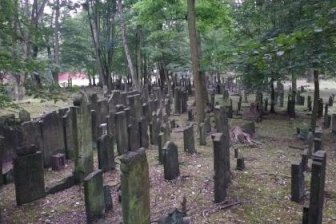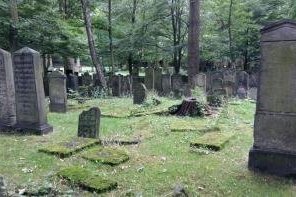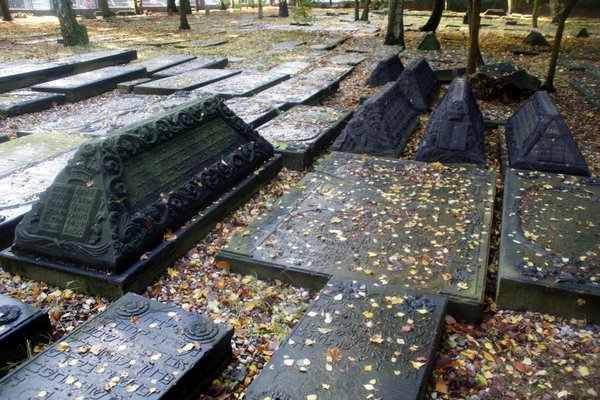Germany
The Jewish Cemetery of Altona Königstrasse
The Jewish cemetery in Altona Königstraße was laid out in 1611 and is considered the oldest surviving Sephardic cemetery.
Sephardim is the name for Jews from the Iberian Peninsula who were expelled in the late 15th century and settled in the Ottoman Empire, Northern Africa and Northern Europe. The cemetery in Altona contains about 8000 gravestones of both European Jewish cultures, Sephardim and Ashkenazi. The graves differ: the Sephardic gravestones are lying slabs or tent-shaped stones, the Ashkenazi ones stand upright.
Site Info
Official Information
- Full Name
- The Jewish Cemetery of Altona Königstrasse. Sephardic Sepulchral Culture of the 17th and 18th century between Europe and the Caribbean (ID: 5973)
- Country
- Germany
- Status
-
On tentative list 2015
Site history
History of The Jewish Cemetery of Altona Königstrasse
- 2018: Requested by State Party to not be examined
- After negative ICOMOS advice
- 2015: Added to Tentative List
- Added to tentative list
- Type
- Cultural
- Criteria
Links
All Links
News Article
- Jan. 31, 2018 welt.de — Jewish Cemetery will not become a WHS
Community Information
- Community Category
- Religious structure: Jewish
- Secular structure: Burial
Travel Information
Recent Connections
News
- welt.de 01/31/2018
- Jewish Cemetery will not become a …
Recent Visitors
Visitors of The Jewish Cemetery of Altona Königstrasse
Community Reviews
Show full reviewsClyde
The Jewish Cemetery of Altona Königstrasse
The Jewish Cemetery of Altona Königstrasse (On tentative list)

I visited this tentative WHS in May 2020. It is indeed very easy to pass by the Jewish cemetery at Königstrasse in Altona without even noticing that it is there.
It is situated in a very urban and populated residential area, along quite a busy street with constant traffic. A rather high wall on the left hand side of the entrance separates it from the residential apartments which are built less than two metres away. To the right hand side of the entrance there is a small playground and the whole surroundings look rather shabby with homeless people sleeping under every other tree. That said, the several high trees inside the cemetery help to conceal it in a sort of idealistic peaceful bubble. The Jewish Cemetery (Friedhof) in Altona is fenced off along its perimeter but the fence iron bars are wide enough to allow unobstructed views of the thousands of tombstones which lie inside, some of which are practically within arm's length from the perimeter.
It is a real pity that the cemetery has very limited opening hours as mentioned in other reviews. Moreover, make sure to check whether your intended visit happens to be on a Jewish holiday as the cemetery will be closed too. For the time being, the Eduard Duckesz House, the only metal structure just by the entrance is also closed until further notice due to the COVID-19 pandemic. However, the highlight of any visit is the sepulchral art present on some of …
Keep reading 0 commentsJakob F.
The Jewish Cemetery of Altona Königstrasse by Jakob Frenzel
The Jewish Cemetery of Altona Königstrasse (On tentative list)

July 2019 - we visited my uncle in Hamburg. Of course it was a weekday and the cemetary was closed, but if you walk around it, you can see actaully everything, that you could see when going onto the cemetary.
I know the Berlin Jewish cemetray, of course the one in Prague and we have been to Trebic. I dont know whetehr this one is really all that special. Interesting the Iberian Quarter in Hamburg, that has to do with the Sephardic Jews that came here from Portugal.
Next time i will be here on a sunday and actually visit the cemetery.
Keep reading 0 commentsnan
The Jewish Cemetery of Altona Königstrasse
The Jewish Cemetery of Altona Königstrasse (On tentative list)

When news broke that Hamburg, my home town, would submit the Jewish cemetery in Altona to the German tentative list, my initial reaction was "We have an old Jewish cemetery in Hamburg?!". While I am used to go to odd places off the beaten path as part of my WHS travels, I did not anticipate to find such a site a mere 20min bike ride from my apartment.
At the time the cemetery was founded (1611), it was not in Hamburg, but in Altona, a separate town till 1938. Altona's rulers (since 1640 Denmark) were more liberal in religious matters than Hamburg. They allowed the Jews to bury their dead on Jewish grounds. Jews from both Hamburg and Altona were buried here. Nowadays, the cemetery is in the middle of the town and the fact that a mere 155 years ago you were actually in a different country can only be witnessed by small stones inlaid on the border.
The cemetery suffered during the Nazi era by allied bombing and some vandalism. The Nazis did not, though, systematically destroy the cemetery. Supposedly because they intended to use the cemetery for racist research, the tombstones providing family trees and the graves providing DNA samples of 300 years of Jewish inhabitants of Hamburg and Altona.
I took a long walk across the cemetery. You have to mind your steps quite a bit as the tomb stones are laid very close together. The site acts as a window into a distant past before …
Keep reading 0 comments
